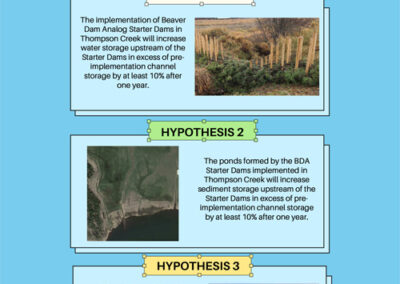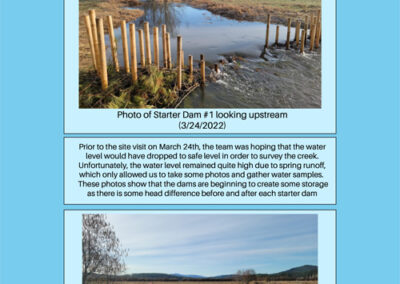Beaver Dam Analogs - Thompson Creek
Thompson Creek Beaver Dam Analog (BDA) Project
Partnerships for Phosphorus Load Reduction Beaver Dam Analog Project at Thompson Creek
- The Lands Council
- Partners for Fish & Wildlife Program at Turnbull National Wildlife Refuge (USFWS)
- Gonzaga University
- Spokane Conservation District
- Newman Lake Property Owners Association
- Spokane County District Staff
The Lands Council (TLC), Partners for Fish & Wildlife Program at Turnbull National Wildlife Refuge (USFWS), Spokane County, Newman Lake Property Owners Association and Gonzaga University are working together to reduce the phosphorous and sediment entering Newman Lake and to reconnect Thompson Creek to its floodplain through the implementation of a Beaver Dam Analog (BDA) Complex.
Thompson Creek is currently a straight, deep channel that has disconnected from its floodplain. Water, sediment, and nutrients are rapidly moving downstream into Newman Lake, resulting in eutrophication and algae blooms.
WA Department of Ecology has the lake on its Total Maximum Daily Load (TMDL) 303d list for total phosphorus, indicating unhealthy amounts of phosphorus in the lake. Thompson Creek contributes 43% of the total phosphorus into Newman Lake.
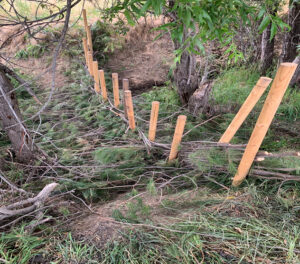 Wood posts embedded in stream with willows woven between the posts
Wood posts embedded in stream with willows woven between the posts- Reduce stream flow velocity (speed)
- Reduce streambank erosion
- Reduce sediment transport
- Traps sediment behind BDA
- Reduce phosphorus load reaching lake
- Create ponds, pools, and wetlands
- Passable to fish
- Improves floodplain connectivity
Location of Thompson Creek BDA(s)
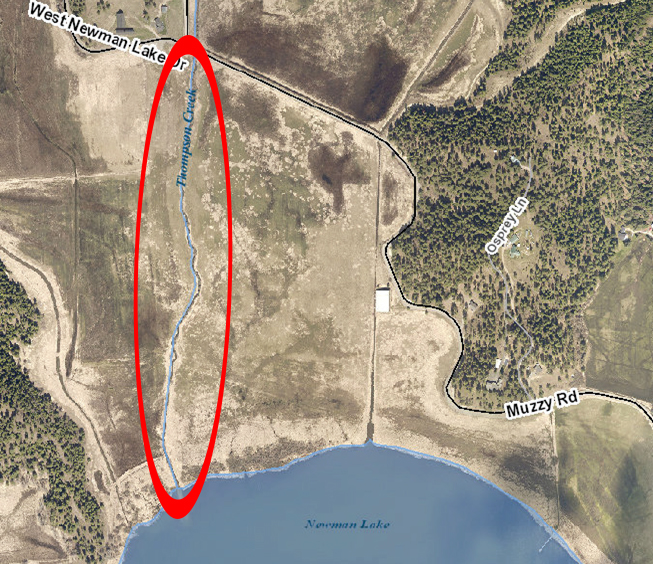
2022 GU Presentation Materials – Construction of the BDA’s
CLICK HERE for the final project report by the 2022 senior GU students on the construction of the BDA’s

Brochure
2021 GU Presentation Materials – Design of BDA’s
Below is a visual presentation of the Design and Evaluation of a Beaver Dam Analog Complex on Thompson Creek by Gonzaga University Engineering Students.

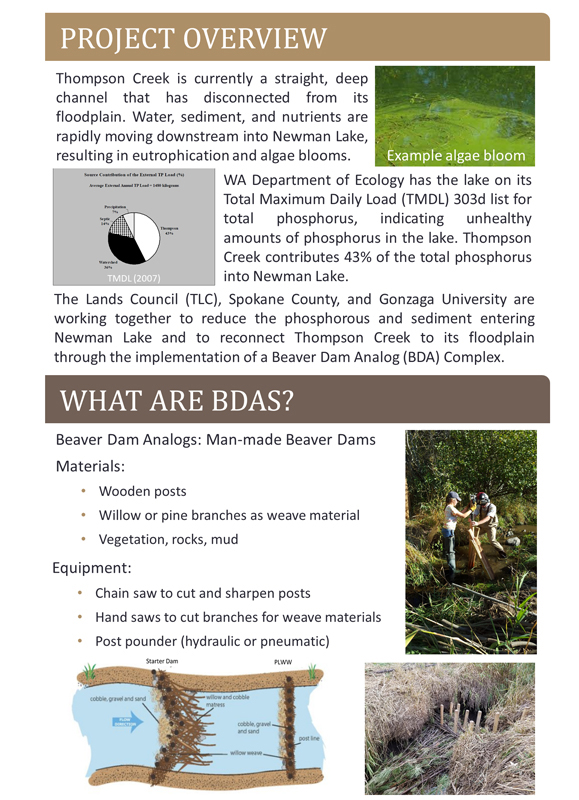
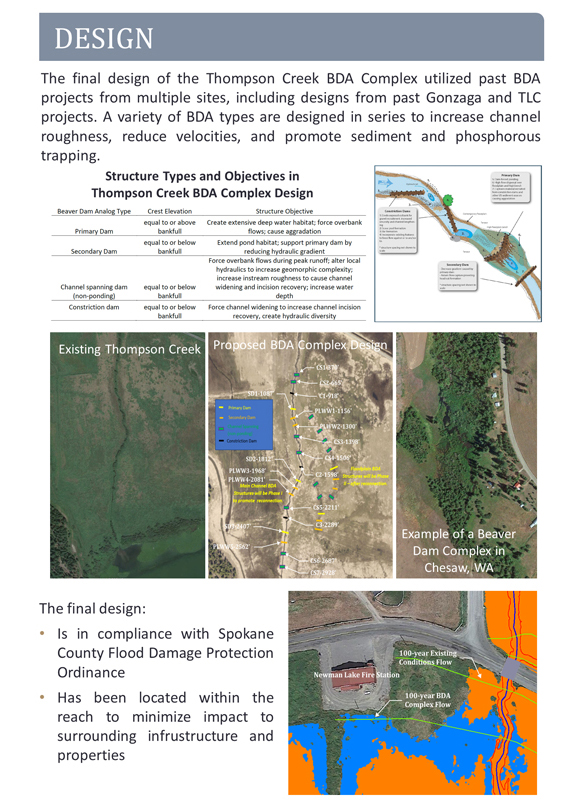

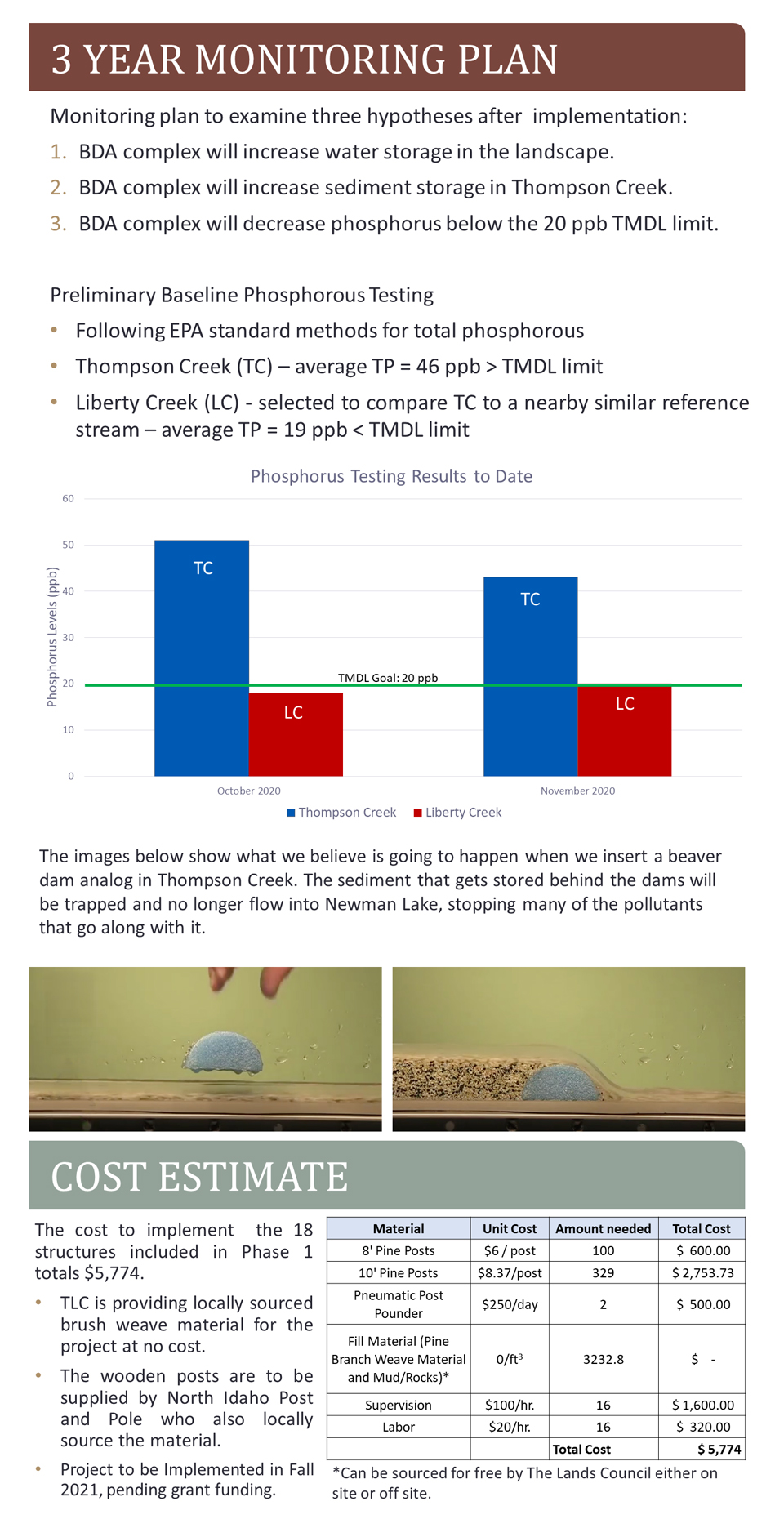
In hopes of reducing phosphorous in Newman Lake, Gonzaga students, Lands Council install beaver dam analogs
By Eli Francovich
Spokesman Review
November 11, 2021
On an overcast afternoon, 20 Gonzaga University seniors garbed in waders did what they could to mimic beavers. The students, all seniors in civil engineering, wove pine boughs between poles driven into the bed of Thompson Creek, north of Newman Lake on Oct. 28.
The endeavor – a partnership among Gonzaga University, the Lands Council, the Newman Lake Property Owner’s Association and the Inland Northwest Lands Conservancy – is aimed at slowing down the water in Thompson Creek and improving the health of Newman Lake.
BEAVER DAM ANALOGS (BDAS) ON THOMPSON CREEK
Kat Hall
The Lands Council
TLC is excited to announce that – in partnership with the Partners for Fish & Wildlife Program at Turnbull NWR, Gonzaga University, and Spokane County Public Works – we have just completed Phase I of our much-anticipated Thompson Creek beaver dam analog (BDA) project!
Will BDA’s keep Phosphorous out of Newman lake and the NL Basin?
The goal is to simulate beaver dams and create a depositional (ponding) environment that will allow sediment and phosphorous to settle out in the ponds that will be formed upstream of the BDAs. Thus, by significantly increasing roughness and creating ponding most of the phosphorous coming down Thompson Creek from the watershed should get stored and “taken up by aquatic plants, periphyton, and phytoplankton. Increases in plant‐available nitrogen, phosphorus, carbon, and increased light availability (due to canopy reduction) favor the growth of instream and riparian vegetation, thus further immobilizing nutrients (phosphorous) within plant biomass that re‐establishes local nutrient cycles (Rosell et al., 2005).”
Ultimately, the BDAs should create an environment where phosphorous is stored and then used by plants and not just directly transported downstream to Newman Lake as the river is currently doing.
Of course, not everything is 100% efficient, and as such there may still be some phosphorous making it into Newman Lake; however, it should be significantly reduced from what it is now and hopefully to below the TMDL level.
There will be monitoring to see the effectiveness of sediment and phosphorous trapping and making adjustments to the BDAs along the way, if necessary, to increase trapping efficiency.
Sue L. Niezgoda, PhD., PE., Professor of Civil Engineering, School of Engineering and Applied Science, Gonzaga University

